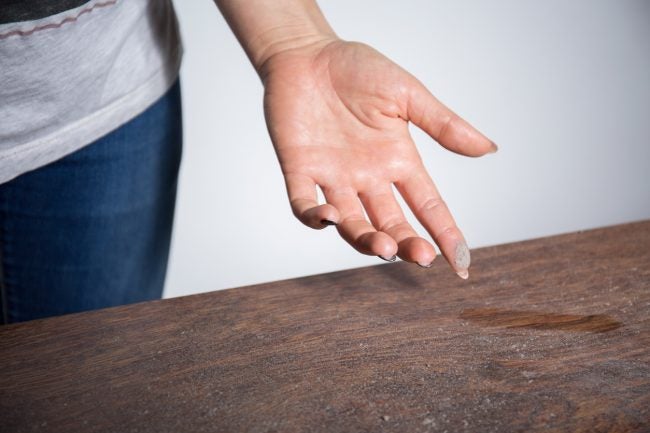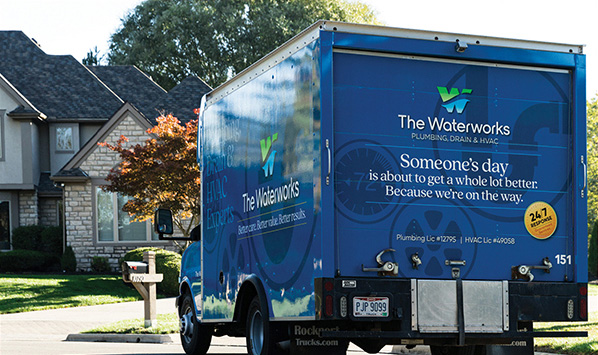
Why is my house so dusty?
Does it seem that you just finish dusting your home and within a few days the dust settles back on your furniture? You are not alone in the battle for a dust-free home. The layers of dust can be a combination of things including dirt, pollen, pet dander, particles of fiber, and even human skin. The dust is not only unsightly, but your family is also breathing in the dust particles. Anyone allergic is likely to suffer from allergy symptoms; stuffy nose, sneezing, and itchy eyes. Once you learn where all the dust is coming from you can take steps to fix the problem.
Dirty HVAC filters increase dust.
The large flat air filters installed behind your home’s return air vents, or on the HVAC unit, are the first line of defense against dust. Cheap air filters have larger holes that allow more dust to pass through and reenter your home through heating and cooling vents.
Air filters are rated by their minimum efficiency reporting value (MERV), on a scale from one to 16, with the higher numbers representing more efficient filters. When selecting HVAC filters look for a MERV rating of at least between 5-8. The more you use your HVAC system, the more quickly filters will clog and be ineffective against dust. We recommend replacing air filters every three months.
Dust lurks in the carpet.
The dirt from your shoes, pet paws, and the air that settle into carpet fibers can be a major contributor to dust in the home. Frequent vacuuming can help as long as you’re not recirculating the dust back into the living space while vacuuming. Consider switching to a higher quality vacuum that has a high-efficiency particulate air (HEPA) filer, designed to trap as much as 99% of dust and debris. To further reduce carpet-based dust encourage family members to take off their shoes at the door. The only way to eliminate dust in your carpet is to replace it with hardwood or laminate flooring.
Don’t forget about upholstery and draperies.
Fabrics and textiles accumulate dust, and the simple act of opening curtains or sitting on the sofa can release dust into the room. Use your vacuum attachments to vacuum upholstered furniture and draperies once a week and have them laundered yearly. Consider switching out your fabric-covered furniture with leather or wood that won’t absorb dust.
Pet dander adds to the dust problem.
Your furry friends, including cats and dogs, shed both fur and skin continually adding to the dust level. Frequent brushing and daily vacuuming will help with the home’s dust levels.
Leaky windows and doors.
Outdoor dust and pollen can enter the house every time the wind blows. Keeping your windows closed during high wind and or pollen levels will help. Applying calk to gaps around windows and replacing worn weather stripping around doors will all help to keep the dust from blowing in your home.
Improve your dusting technique.
No matter how often you dust, if you don’t do it correctly, you may unintentionally move the dust around instead of removing it. Be sure to use a microfiber cloth which will help to trap the dirt. If you use a rag, dampen it slightly to help trap the dust. Always dust from the top to the bottom; higher surfaces first and remember that dust can cling to vertical surfaces too, so wipe down the walls with a damp cloth once a month. Whether you vacuum before or after dusting is up for debate. If your vacuum is not HEPA-equipped), you are better off vacuuming first.
Dust could be entering through leaky ducts.
HVAC air ducts run through ceilings, walls, attics, and crawlspaces, and if there are holes in the ducts or unsealed spots where two pieces of ductwork connect, dust can be drawn into the ducts and then blown into your living space. If you notice more dust settling after running the furnace or air conditioner, a leaky duct could be the problem. If the previous solutions haven’t reduced the level of dust, it might be time to call The Waterworks HVAC technicians who can run a pressure test on the duct system to determine if it’s leaking and repair the leaks if necessary.
Invest in an air purifier for the cleanest indoor air.
While the previous solutions will all help reduce the amount of dust in your home, if airborne dust is still a concern, you can further reduce it by using a Lennox air purifier. Air purifiers come with a variety of filters, including carbon and HEPA filters, which are designed to trap airborne dust and other particulates.
Blog content attribution: https://www.bobvila.com/articles/why-is-my-house-so-dusty/
Plumbing emergency? We respond any time!





